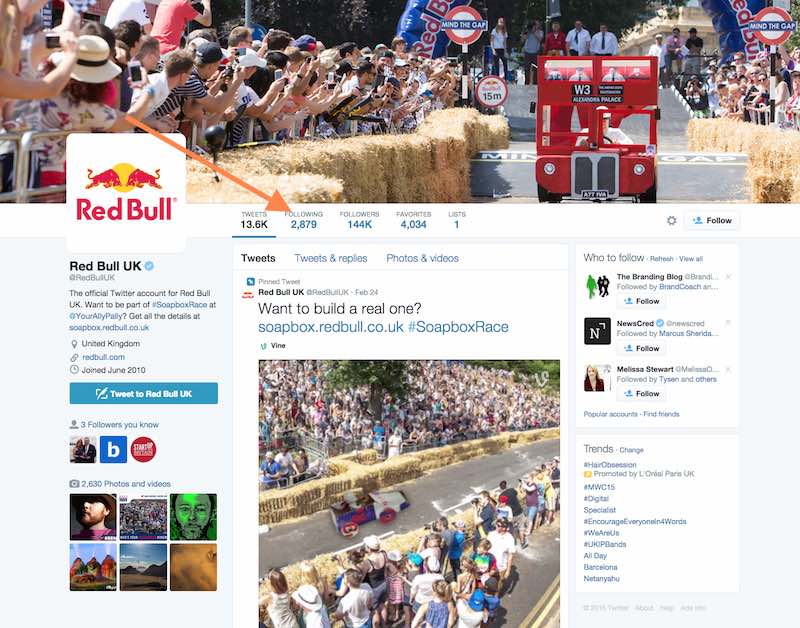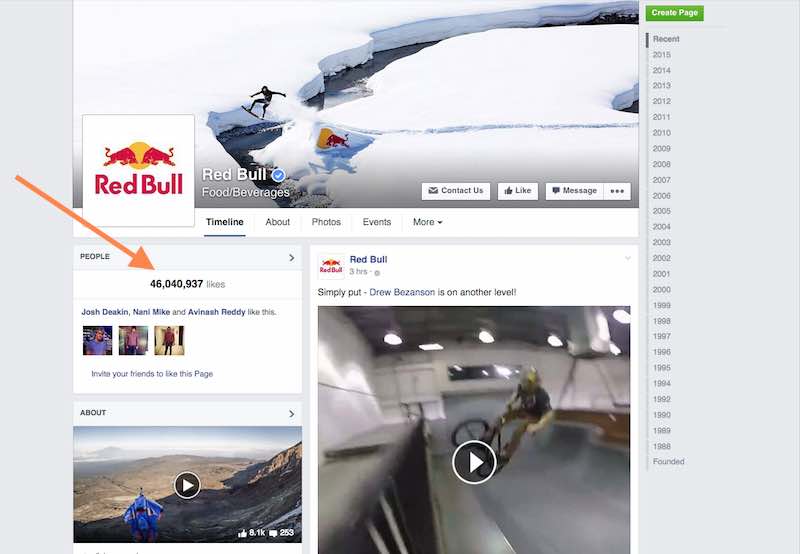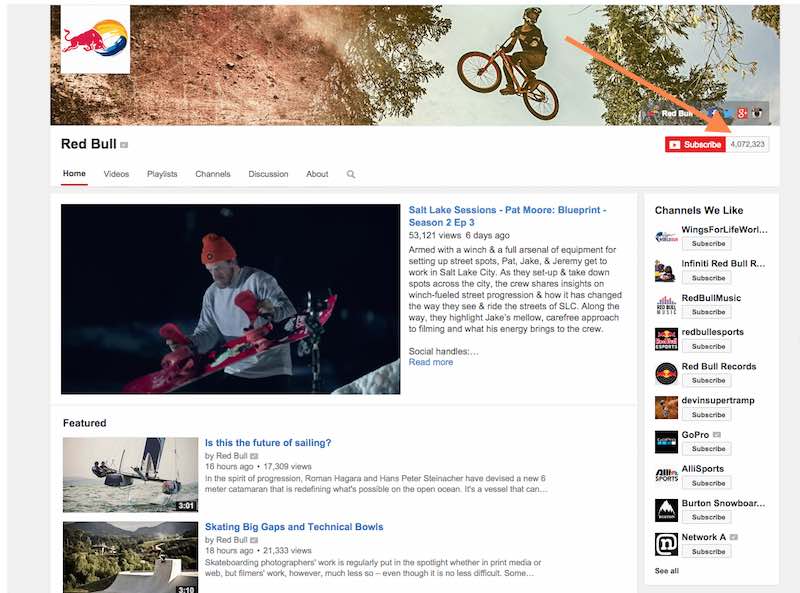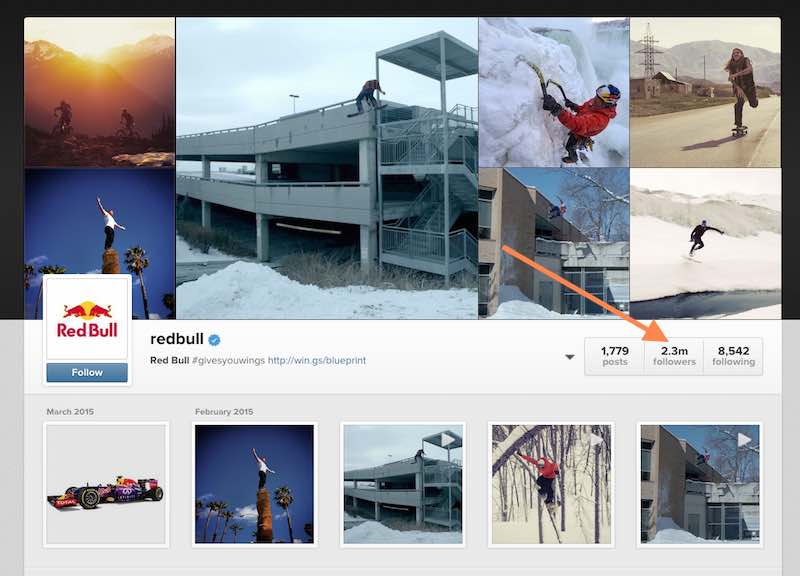Why do well-known brands spend so much money on advertising?
Well, advertising a brand is for the people, especially the target market, to know about it.
Ok, here the question is why the top of the list companies keep on spending huge amounts even when they know that everybody knows about their brand.
Well, they honestly believe the saying: “Out of sight (& hearing) is out of mind!” And it’s true that people have limited memory and with so many brands showing up in the market, it’s very hard for the consumers to stick to their customer loyalty. After all, we all accept the fact that humans descend from monkeys which are notorious for being fickle-minded.
So, the more a product is consumed by the consumers, the more other brands of the same product spring up. Everybody wants their finger in the most favoured pie, you know.
To be always on the forefront of the minds of the consumers, brands spend huge amounts on the publicity campaigns. And Red Bull is not an exception. Well… in fact, Red Bull is an exception in an entirely different sense: Red Bull publicizes more and advertises less, spending about 35% of their budget on publicity.

The brand strategists as well as the brands themselves know how bored the consumers become on seeing the same boring ads one after the other with almost the same taglines and the exaggerated smiles of the actors in the ads. Red Bull and some of the likes of it have found a different way to keep in the minds of their target market. And that special way is to sponsor some ‘relevant’ activities which captivate their target market. They never beg you to buy their products, instead they stay there for you to see them and appreciate them in those activities you are interested in.
Let’s analyse Red Bull’s way of staying alive:
Red Bull was initially called Krating Daeng, ‘Krating’ meaning a ‘gaur’, not a bull, sold locally in Thailand by a chemist named Chaleo Yoovidhya in 1976. In 1982, an Austrian salesman, Dietrich Mateschitz, realised that he was relieved of his jet lag after consuming Krating Daeng, and made a deal with Chaleo Yoovidhya, resulting in a ‘caffeine based energy drink’ by the name Red Bull finding its way in the European market. Chaleo Yoovidhya provided his improved recipe and Dietrich Mateschitz marketed it with his salesman’s talent.
Most of us believe that bulls go crazy when they are shown a red rag. Whether it’s true or not, the talk of the town is that people who are given Red Bull, the much lauded energy drink, are sure to go crazy. In fact, Red Bull is the drink that ‘created’ a new entry the ‘energy drink’ category in Food & Drink (Beverage) industry. Though there have been several popular ‘soft’ drinks for centuries, Red Bull has given us an energy drink, a drink that revitalises the consumer’s senses.
The original tagline for Red Bull was “Red Bull Gives You Wings” or “Red Bull Gives You Wings & Ideas.” How come wings and flying attached to Red Bull? The reason could be that when you are energetic, after consuming the drink, you feel like flying, or it could be that the founder likes flying very much and wanted his passion reflected in his product. (However, this caption was discontinued due to consumer claims and the new caption is ‘No Red Bull; No Wings’.)

The bird with the largest wingspan is the wandering albatross with an average wingspan of 3 m (about 9 feet 10 inches), but our Bull that can never actually fly has a wingspan spread over more than 166 countries with a considerable flight record of 27 years, laying about 40 billion eggs (cans & bottles) at record high-altitudes (with revenue graph index reaching more than 5 billion euros or about $ 6.5 billion).
What is the magic behind the up-thrust that elevates Red Bull to such great Brand value?
Every business has to follow the same procedure to get profits: product or service quality; publicity & advertising; and marketing strategy. But the crowd –pulling spell is in executing the procedure. Every surgeon that operates on patients follows the same procedure and has the same instruments, but the surgeon’s skill is shown in studying the case history thoroughly well in advance, bearing the level of severity and the urgency in mind, preparing the patient for the surgery, having efficient staff in assistance, and finally, executing the surgery as precisely as possible.
The publicity ‘think tank’ at Red Bull lab understood the pulse of the public, and designed their advertising strategies accordingly.
The following are some of the reports of the financial experts on the budget allocation of Red Bull:
- “…Red Bull has spent a whopping £422 million from 2005 through 2009.”
- “…In 2007, for example, Red Bull reportedly invested £89.2 million ($146 million) in F1, of which $128 went to Red Bull Racing, the remaining $18 million to Toro Rosso. In 2008, it invested $135 m….”
- “…(in 2010) the energy drink maker, its logo emblazoned on four racing cars, got 4 hours, 27 minutes of TV airtime at the first 15 races… compared with about 52 minutes for Ferrari, research by Guildford, England-based Margaux Martix Ltd. Found.”
- “(2010)…an average $135 million a year on its main Milton Keynes racing…”
- “(2012)… The Red Bull Stratos mission… Wayne Friedman at Media reported the cost of the mission at $65 million. (One of the greatest marketing stunts of Red Bull done by the daredevil Austrian Felix Baumgartner broke three records: the highest free fall jump, the fastest freefall speed and the highest balloon flight by a human, from more than 128,000 ft, reaching a speed of 833 mph, or 1.24 Mach which is faster than the speed of sound.)
[And what are the returns: ‘INDUSTRY INSIDERS SUGGEST ITS SPACE JUMP COULD BE WORTH £100 MILLION TO THE BRAND!’]
[According to Elvis Esiedu, a management lecturer at the Institute of Business Studies, Kumasi, Ghana, Red Bull sold +5.3 billion cans in 2013, exceeding 5 billion Euro mark…. after the stunt show.] - “(2014)… spent more than $1.2 billion on its flagship Formula…”

Mack Collier of MackCollier.com wrote in his article ‘The power of Being Second: How Red Bull is winning the Content Market Wars’ that Red Bull follows “customer-centric marketing”. He added that everything about the brand’s content, marketing and communication efforts was about its customers and what was important to them, and that the product itself was secondary to the activities that the customer engaged in, and cherished.
I heard that drivers on their long drive drank Red Bull to get refreshed, and I tried it a couple of times myself while I was driving through Europe and found refreshed, not got wings or anything of that sort, but a bit relaxing. Well… “results vary” from person to person, we are often told in the very fine print.
Old Empires Fall; New Empires Rise:
History shows us that old empires fell and new empires rose. The Greeks, the Romans, the Chinese, the Huns, the British and the Americans with all their pomp and political and trade strategies fell! They grew so huge and heavy, they fell under their own weight, and some of them succumbed to mere barbarian attacks.
Likewise, with all the hype the Red Bull has created, it is not able to subdue its competitors. Though it maintains in the top position in the USA market and enjoys a massive lead over its rival brands worldwide at present, it has failed to prevent the other brands from staying in the market. There are about 8 popular ‘energy drinks’ available on the market and each one is making its presence felt… slowly but surely.
That’s the reason a brand must keep pumping millions on innovation and on publicity as well.
Bull Chased by Monster:
With the same publicity stunts and advertising strategy, Monster Energy, the second top energy drink in the world right now, with its daring tagline: “Unleash the Best”, is gaining on the Bull. The competition has become so severe and exciting for the marketing experts that there are already some speculations floating around as to which one survives in the long run. The Bull has a greater head start, but the question that troubles us is can the Bull keep the gap growing or will the Monster take over?


